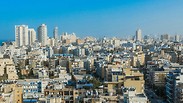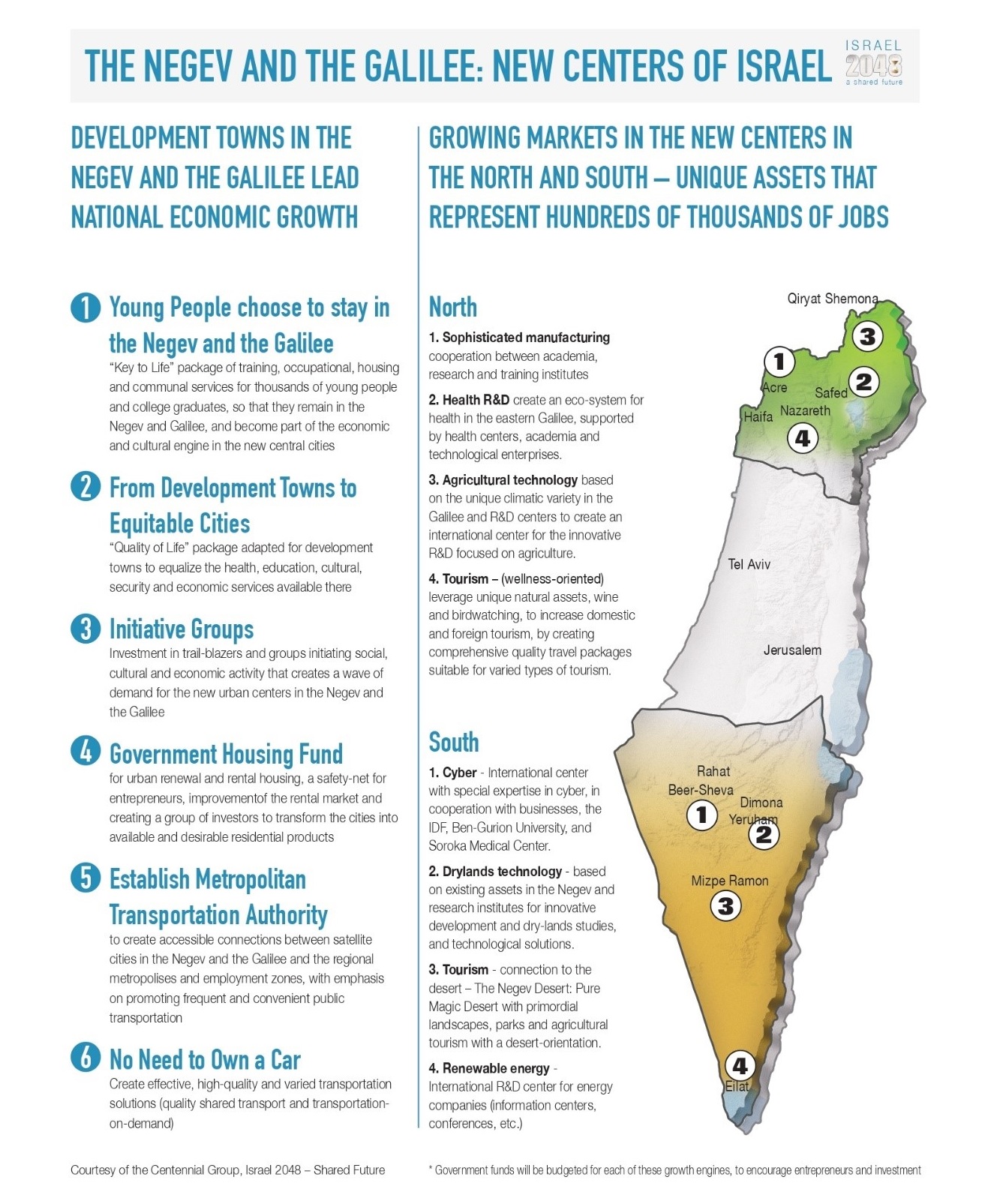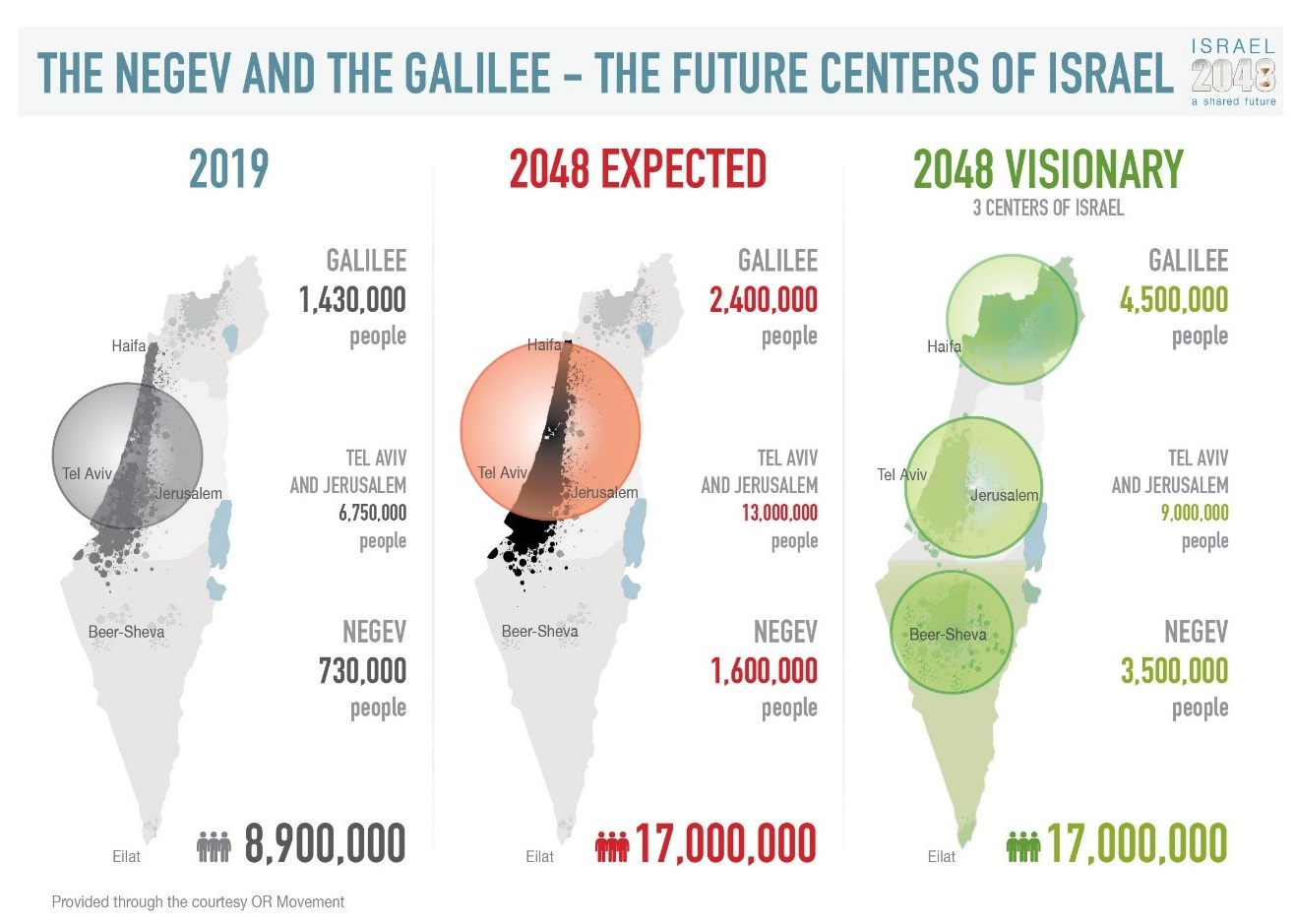
Time to act
The establishment of a new government is an ideal time to focus on strengthening the Negev and Galilee in order to prevent a demographic catastrophe in the coming years. "Israel 2048 – Shared Future" program is working with more than 200 organizations and experts to formulate a plan that will transform Israel from a country with a single center and a periphery, into a country with three large centers. Here’s how it will happen.
"The first hundred days after the establishment of a government are considered ‘a hundred days of grace.’ Experience shows that issues that are not promoted during this period will not be realized throughout the term of office. Therefore, our main recommendation is to take advantage of the first hundred days of grace after the establishment of a government to promote major reforms and processes” (The Israel Democracy Institute, Policy Paper No. 14, 1999).
As these lines are being written, coalition negotiations to form the next government are underway, and Israel is on the threshold of one hundred days of grace, when the decisions made, or not made, are potentially critical for the future of the state.
The demographic-statistical forecasts for Israel show that in 2048, the country's centennial year, its population is expected to grow to 17 million. If there is no change in the current population distribution, in 2048 the center of the country will suffer from an intolerable density of 13 million residents, compared with only four million residents living in the Negev and Galilee, mostly drawn from weaker population sectors.
Country with 3 centers
In order to prevent this, the "Israel 2048– Shared Future" initiative has been working with more than 200 leading civil organizations and officials over the last year to formulate plans that will change the gloomy and worrisome outlook. Currently, participants in the initiative are working to ensure that the plan is included in the topics promoted by the new government during the first 100 days of its term.
The plan is founded on realization of the vision that will transform Israel from a country with a single center and a periphery, into one with three large centers. The Negev and Galilee will be defined as national growth engines and become, by 2048, equal to the central region in all regards, which will lead to a balanced distribution of the population.
Of course, this requires budgeting. The first decision that needs to be approved is the establishment of national headquarters, an administration to advance a long-term plan that will include all of the necessary areas, and set clear goals for time-bound implementation, similar to programs implemented in many other countries, such as Ireland 2040, Jamaica 2030, and Randstad 2040 in the Netherlands.
Shortly before the government was formed, we approached Knesset members from several parties expected to be partners in the coalition, and asked them one question: “In the context of the coalition negotiations, what are the issues that you will demand be included for advancing the Negev and Galilee as national growth engines"?
The varied responses show that each party has its own demands and plans for the development of the Negev and Galilee, but conspicuous in its absence is a single national headquarters that will be able to coordinate all the demands and build a coherent national plan, which will be supported and financed by the government, and include all components needed to successfully make the Negev and Galilee equal to the central region in every way.
“One of our main demands is the plan to safeguard" northern Israel, for 5 billion NIS for 10 years,” said MK Oded Forer (Yisrael Beiteinu party). “It is the only plan that provides a response to the threat of earthquakes. Moreover, in the fields of immigration and absorption, we require earmarked budgets for encouraging immigration to the Negev and Galilee, as part of a special plan on this issue, and increasing the budget of municipalities in the Negev and Galilee that absorb immigrants.”
Deputy Health Minister Yaakov Litzman (United Torah Judaism), naturally focuses on health, but not on health alone.
“We will continue to see the advancement of the periphery as a preferred target in the health system,” Litzman promises. "We will establish a new hospital in Be’er Sheva and call for affirmative action in housing on the part of the government, for the purchase of a second-hand apartment, especially in peripheral cities."
Strengthen the periphery
Shas Party chairman Aryeh Deri, who in addition to his tenure as Minister of the Interior held the portfolio for development of the periphery, Negev and Galilee, also intends to continue strengthening the social and geographic periphery.
“We will continue to deal with three main areas in which we have already worked a great deal in the previous government,” said Deri and provided details: More than 45 shared work centers will be established throughout the Negev, the Galilee and the social periphery. These workplaces are subsidized by the Ministry for the Development of the Periphery, Negev and Galilee, which lowers the cost of creating quality employment opportunities for young people and entrepreneurs in these regions, budgeted at more than 90 million NIS. Simultaneously, we will reinforce some 800 small and medium-sized enterprises, and companies. Local authorities will be strengthened and continue to adapt economic projects that generate change, according to the local needs of the municipality, in order to buttress them and create jobs for local residents.
Providing extra-curricular activities for children for only 50 NIS a month and continuing to establish centers of excellence and a wide range of afternoon enrichment activities, as part of the effort to reduce gaps and provide equal opportunities for children in the periphery. At the same time, special programs will be promoted to prevent students from dropping out of educational frameworks.
The narrowing of the gaps will continue and the leisure life will be strengthened for parents and children in the periphery, by establishing hundreds of playgrounds in municipalities that have not had them previously. More youth centers will be established, in addition to the current 60 centers. Assistance will be given to encourage local leadership, so it becomes the future leadership core on the municipal level.
OR Movement is working with many partners to promote the concept of the new centers, as part of the "Israel 2048 – Shared Future" initiative.
“From meetings and conversations with MKs, there seems to be a desire for real and meaningful change, one that foresees the future while also improving the lives of residents of the Negev and the Galilee immediately. The emphasis in the coming Knesset will be on changing the paradigm, on making the Negev and Galilee into thriving centers, stressing the development of sources of employment, improving the quality of life in cities, and increased demand for investment and housing.” - Roni Flamer, Co-founder and CEO, OR Movement


















